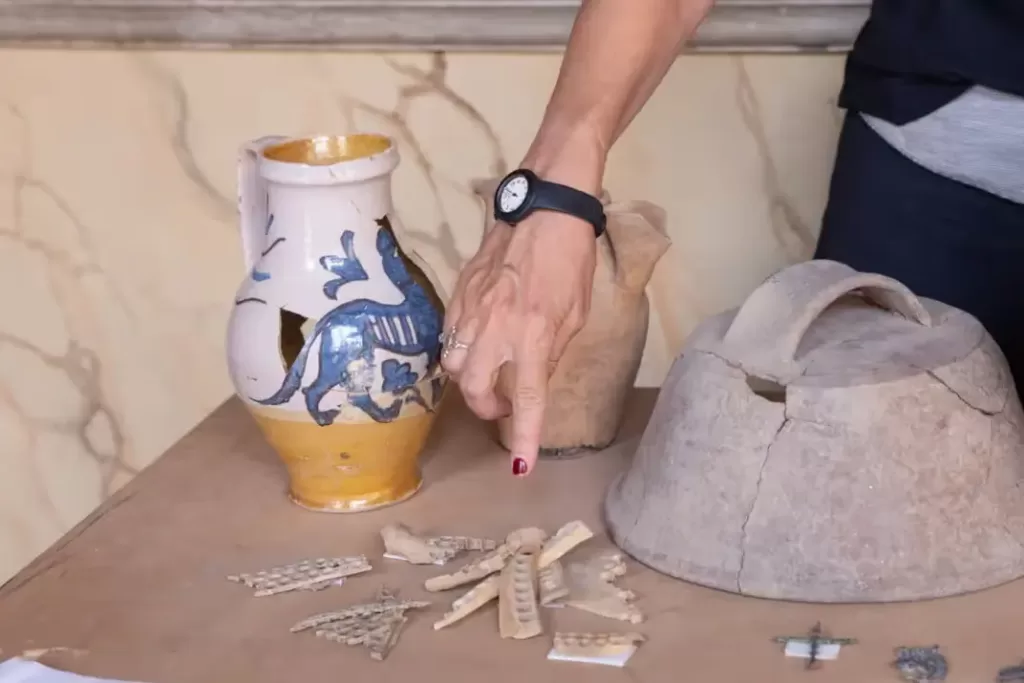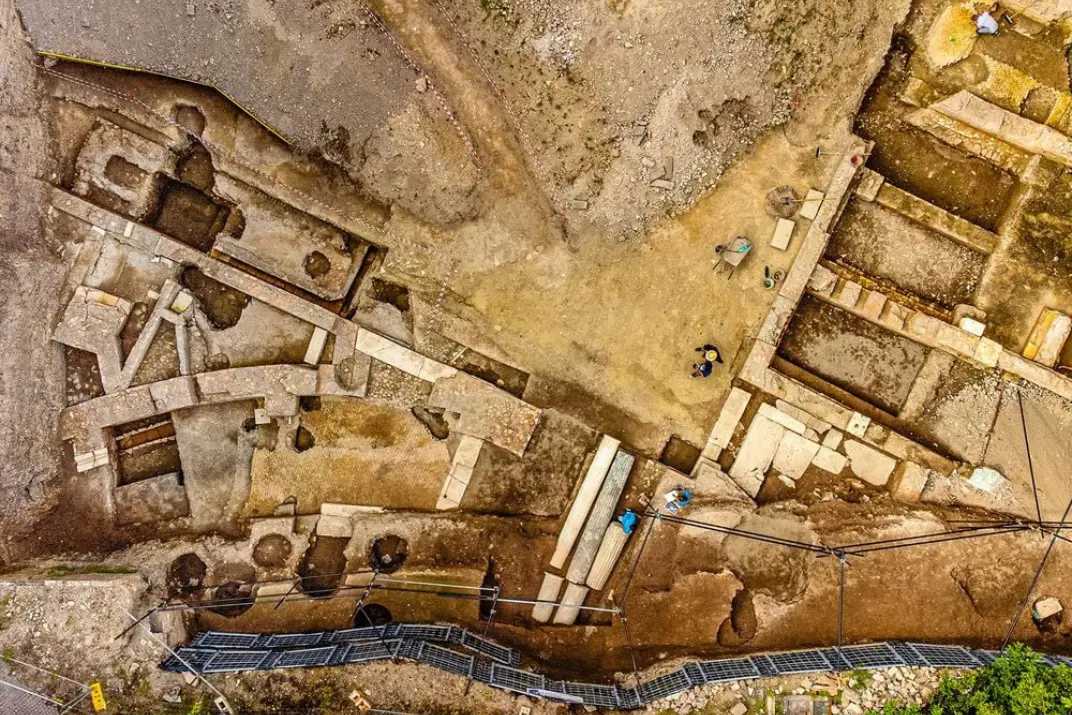In the heart of Rome, beneath the bustling streets, a team of dedicated archaeologists embarked on a journey. Roman archaeology would rewrite history books and unveil a hidden treasure trove of ancient art and culture. The archaeological dig near the Vatican, on the site of a future Four Seasons hotel at the Palazzo della Rovere, revealed a stunning secret:
The lost theater of Emperor Nero, who ruled Rome from AD 54 to AD 68.
This discovery not only sheds light on Nero’s passion for the arts but also offers a glimpse into the opulence of the Roman Empire during his reign. In this blog post, we’ll delve deep into the:
- Excavation of lost and found Nero’s theatre in Rome
- Exploring its historical significance
- Artifacts unearthed
- Ongoing efforts to preserve this priceless piece of Roman history
We’ll also touch upon the epic tales of Nero’s life and the legacy he left behind in the form of this grand theater.
Unveiling Nero’s Lost Theater

The search for Nero’s long-lost theater began in earnest as the archaeologists excavated the site in 2020. They had their work cut out for them, with the theater’s existence documented by Roman archaeology news. But its exact location is shrouded in mystery. As the excavation progressed, the team unearthed a series of exceptional finds that left the world in awe.
One of the most striking discoveries was the presence of stucco walls adorned with gold leaf, along with rare African marble columns. These opulent features provided compelling evidence of a commissioned structure, dating back to the mid-first century C.E.
As they delved deeper into the site, the archaeologists stumbled upon a treasure trove of artifacts spanning several centuries.
The Architectural Marvel

Nero’s theater, lost to the annals of history for centuries, now stood before the world in all its glory. The horseshoe-shaped seating section, with its majestic marble columns, formed the centerpiece of this marvel. This discovery was a significant breakthrough, as it confirmed the existence of a theater where Nero himself performed his poetry and music.
Additional rooms, potentially used for storage, contained remnants of costumes, providing invaluable insights into the theater’s operations. Gold-leaf adornments added pomp and grandeur to the space, befitting the extravagance of Nero’s reign.
Nero: The Artistic Emperor
Nero, often remembered for his tyrannical rule and behaviour, had a profound appreciation for the arts. He declared, “What an artist dies with me!” as his final words, underscoring his love for creativity and culture. While history paints Nero as a ruthless leader, his devotion to the arts cannot be denied.
His theater was not just a stage for self-representation of power but an ambitious attempt to shape society. An Roman archaeologist “Alessio De Cristofaro”, points out that Nero’s legacy also includes essential economic reforms, such as currency reform. While some historians have cast Nero as a debauched ruler. Others believe that his excesses were exaggerated.
The Legacy of Nero’s Theater
As the excavation of Nero’s theater continues, the archaeologists are faced with the delicate task of preserving of preserving this vital piece of Roman archaeology. Already, the elements have begun to take their toll on the uncovered structures. To protect this invaluable piece of Roman history, the site will be reburied.
The artifacts recovered from the excavation tell their own stories, spanning centuries of Roman history. Among them are medieval glass goblets, cooking pots, coins, and musical instrument fragments. Bronze amulets worn by religious pilgrims and tools used to craft rosary beads provide a window into the daily lives of ancient Romans. It will take years of dedicated research to unravel the secrets held within these artifacts.
Nero’s Artistry and Influence in Roman Archaeology
Nero’s theater not only serves as a testament to his love for the arts but also highlights his influence on Roman society and adding a fascinating layer to the field of Roman archaeology. He opened his theater to a broader audience, not just the elite class, which was a significant departure from the norm. His mastery of the seven-stringed harp-like cithara showcased his dedication to music and performance.
The discovery of the theater is a poignant reminder of how even controversial figures like Nero can leave an indelible mark on history through their artistic pursuits. It prompts us to reevaluate the multifaceted nature of historical personalities and their contributions to culture and society.
The Road Ahead: Continuing the Journey of Discovery

As Roman archaeologists continue to analyze and catalog the artifacts recovered from Nero’s theater, the world eagerly awaits more revelations from this extraordinary site. The medieval glass goblets, in particular, stand out as a rare find, with only seven known examples from Nero’s time. This excavation alone has doubled that number, adding to the rich tapestry of ancient Roman craftsmanship.
The artifacts and the theatre in Rome itself will eventually be showcased in museums, allowing visitors to connect with the grandeur and artistry of Nero’s era. Meanwhile, the Renaissance garden above the site will be lovingly restored, ensuring that this hidden gem remains protected and accessible for generations to come.
Final Thoughts
Beyond his public image, Emperor Nero had a complex personal life. The discovery of artifacts and inscriptions in his ruins provides insights into his relationships and daily existence, offering a captivating dimension to the realm of Roman archaeology. The Golden Nero Theater is just one example of his enduring architectural legacy.
With the excavation complete, what lies ahead for Nero’s lost ruins? Will they be open to the public, providing an opportunity for future generations to explore the legacy of this enigmatic emperor and enrich their understanding of Roman archaeology? Share your thoughts below.
Note: If you’re captivated by ancient mysteries, don’t miss our previous expedition where we delved deep into the discovery of a Lost Tomb of Santa Claus, Underwater Pyramid, City of Atlantis, and Temple of Amenhotep. Join us on this archaeological adventure as we continue to unveil the enigmas of the past.
FAQs
1. What is Nero the Roman emperor known for? Nero is known for his:
- Association with the Great Fire of Rome
- Lavish and often extravagant lifestyle
- Patronage of the arts
2. Is Nero related to Julius Caesar?
No, Nero is not directly related to Julius Caesar. However, both Nero and Julius Caesar were Roman emperors, albeit during different periods of Roman history. Nero’s reign occurred several decades after Julius Caesar’s time.
3. Why is Nero important to Rome?
Nero’s significance to Rome lies in his reign’s impact on Roman history. He contributed to the development of Roman culture through his support of the arts and his economic reforms.
4. What are 3 major accomplishments of Nero?
Nero’s major accomplishments include:
- Initiating economic reforms, including currency reform.
- Patronage of the arts and construction projects, such as his theater.
- Expanding the Roman Empire’s territorial boundaries during his early years as emperor.
5. What emperor of Rome is said to have played the lyre and watched as Rome burned?
Nero is the emperor associated with playing the lyre while Rome burned during the Great Fire of Rome in AD 64. This event has contributed to his controversial historical reputation.
6. Where is Nero buried?
Nero’s burial place remains somewhat uncertain. Historically, he was buried in the Mausoleum of Augustus, but after his death, his body was moved several times. The exact location of his final resting place remains a topic of historical debate and research.

